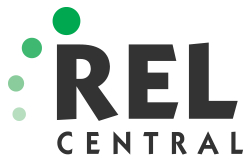Kara Four Bear, principal of New Town Middle School, believes that community, school, and district support—informed through an enhanced Native American Needs Assessment and its action plan—could provide strengthened opportunities for the academic success of Native American students in North Dakota. Originally from the Cheyenne River Sioux tribe in South Dakota, Four Bear began working for the Bureau of Indian Education (BIE) System. This enriching experience led her to seek further professional growth to better understand educational systems and their effectiveness as they are designed to serve Native American student populations. This path has led her to the New Town Public School system, where she has been a strong voice for equity, cultural learning, and community engagement in schools.
New Town Middle School, located on the North Dakota reservation of the Mandan, Hidatsa and Arikara Nation, has a large Native American student population. As Four Bear explained, despite the economic impact of the oil industry in her area, challenges facing native communities, such as generational poverty and a lack of cultural identification with traditional lesson plans, continue to influence education concerns like dropout rates and absenteeism. She believes that, if used correctly, the Native American Needs Assessment could increase the development of culturally based and sensitive instructional tools and contribute to greater community engagement.
“It’s a valuable resource, and it has a lot of potential for identifying and disseminating resources to our families and educators,” Four Bear said.
The Native American Needs Assessment was developed by the North Dakota Department of Public Instruction (NDDPI) to gather the observations and concerns of education administrators in 29 schools with large Native American student populations. The data collected from the assessment each year is used to develop an action plan that guides the allocation of resources to address challenges in those schools.
In 2017, NDDPI decided to look at ways to increase the range of questions and scope of participants, asking the Regional Educational Laboratory (REL) Central to support them in the work. As part of enhancing the assessment, tribal representatives were asked to provide comment. NDDPI then used that input to make changes to the assessment, one of which was its expansion to teachers and paraprofessionals. The assessment was administered in September 2017 to the 29 schools as well as to the four largest school districts in North Dakota: Bismarck School District 1, Fargo Public Schools, Mandan Public Schools, and Grand Forks Public Schools. As one of the stakeholders who provided input for the needs assessment changes, Four Bear argued for more inclusivity of assessment participants. She explained that input from those working directly with native students in North Dakota's public schools, including teachers, was essential to finding practical solutions to challenges students and teachers face.
Four Bear stressed the importance of the role teachers at her school play in fostering learning environments in which students connect with curriculum in meaningful ways. To do so, she expressed that one of the primary needs, identified in past assessments, was for added resources for training opportunities and tools focused on cultural backgrounds of native students to support more culturally relevant instruction. She said that tying cultural backgrounds to lessons can be an important factor in reducing dropout rates and absenteeism.
Looking beyond the immediate enhancement to the assessment, Four Bear discussed its future as a means to bring together parents and teachers around common challenges facing the schools and their students. While she acknowledges that generational poverty and societal norms are contributors to a disconnect between communities and education institutions, she believes that family engagement is an important factor for student success. Four Bear supports the transformation of the assessment into a parent-friendly informational tool that can be used to share the unique challenges facing native students and opportunities to improve support for all native students’ academic success. Her recommendations for the final version include limiting jargon and making a user-friendly electronic version with improved aesthetics.
“An app-based resource would be really neat. A lot of public schools are building their apps and that's where our families are—that's where our teachers are—and that’s where we have to meet them.” said Four Bear.





